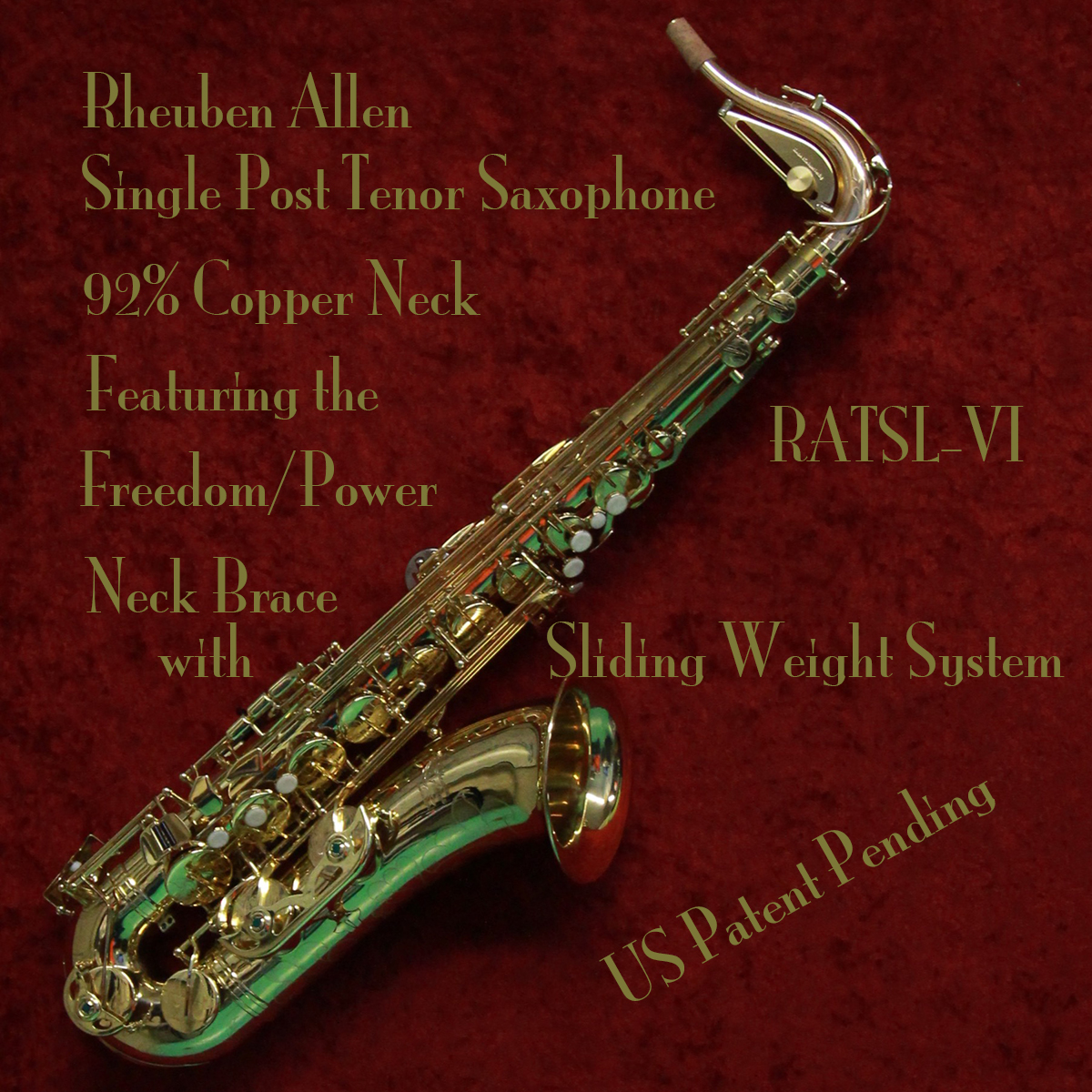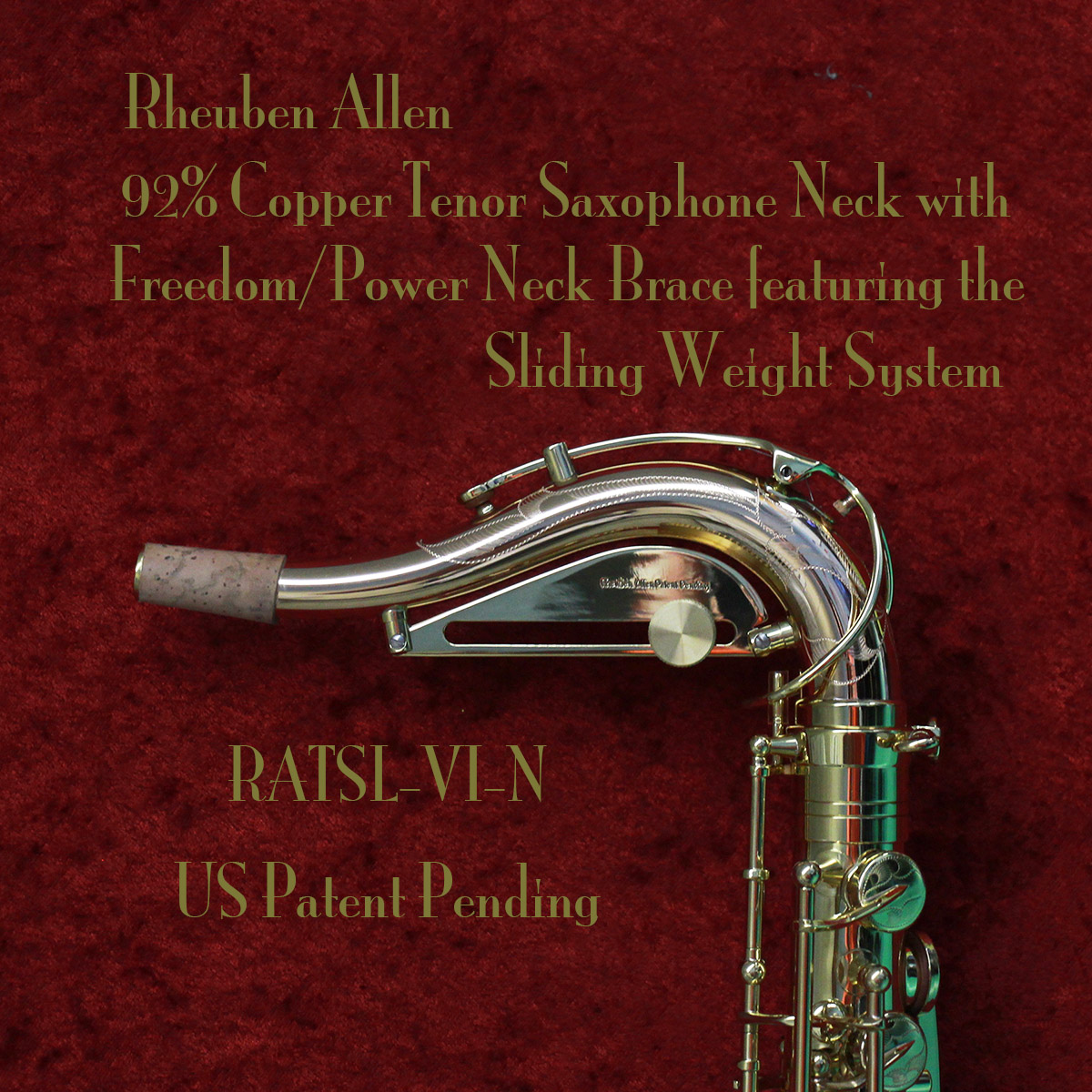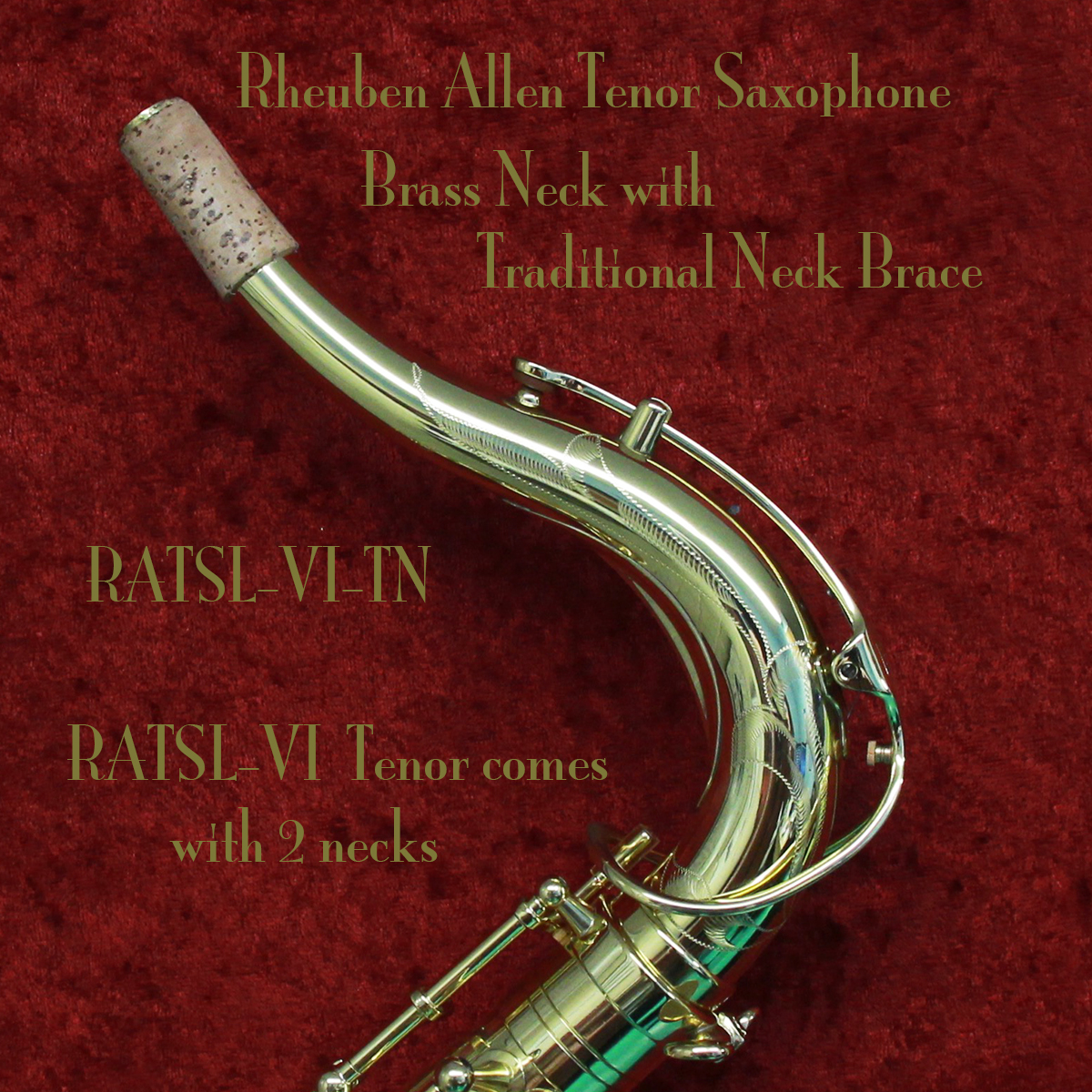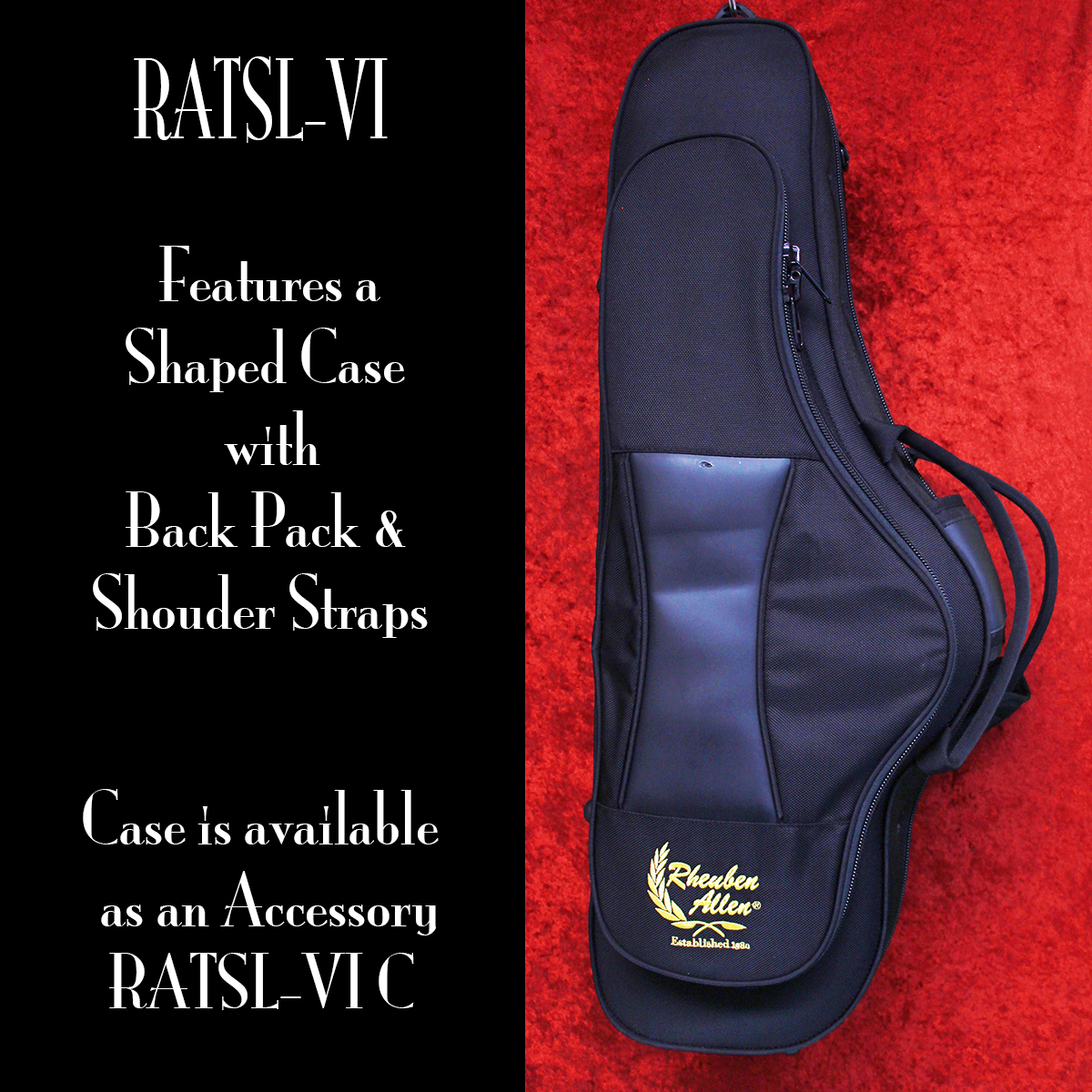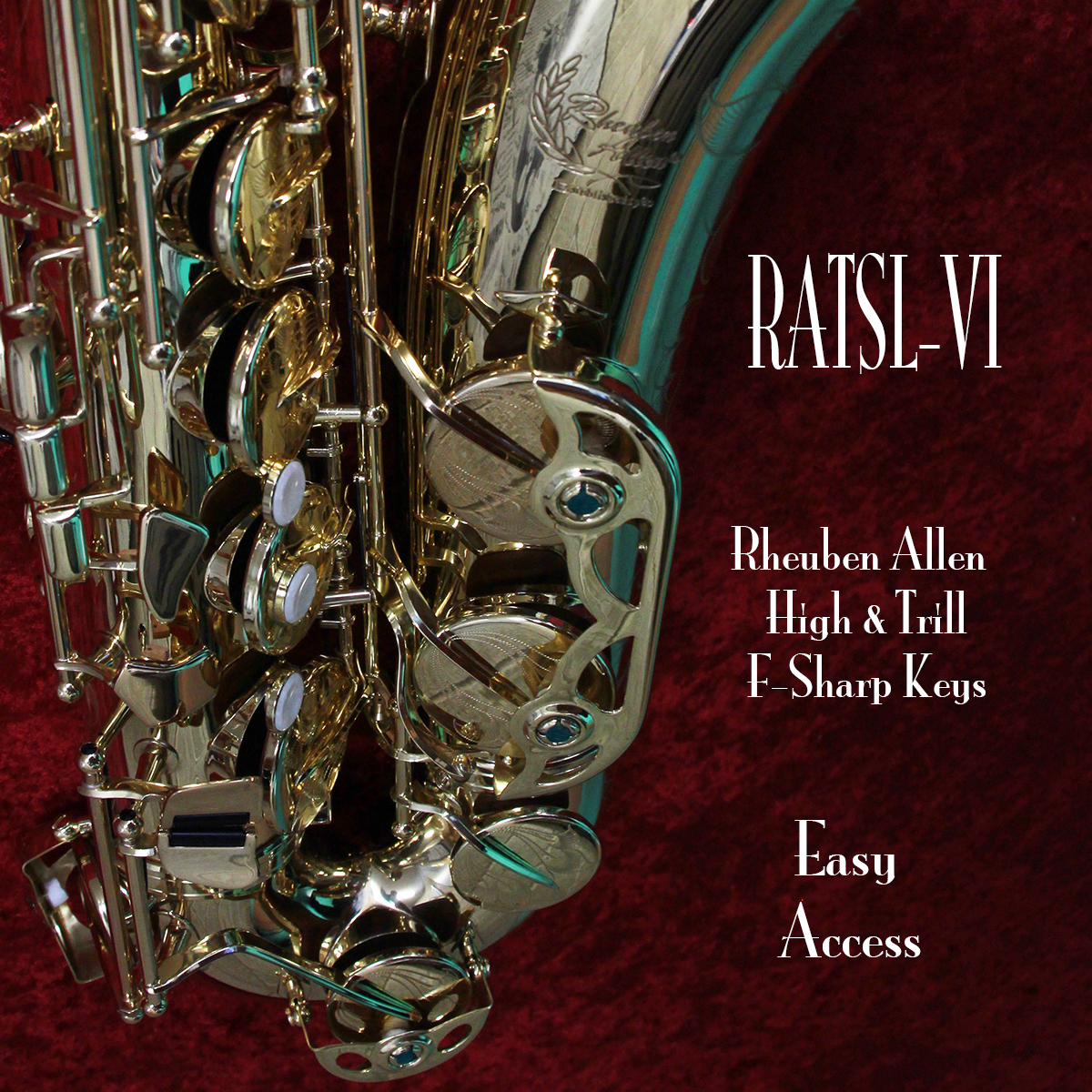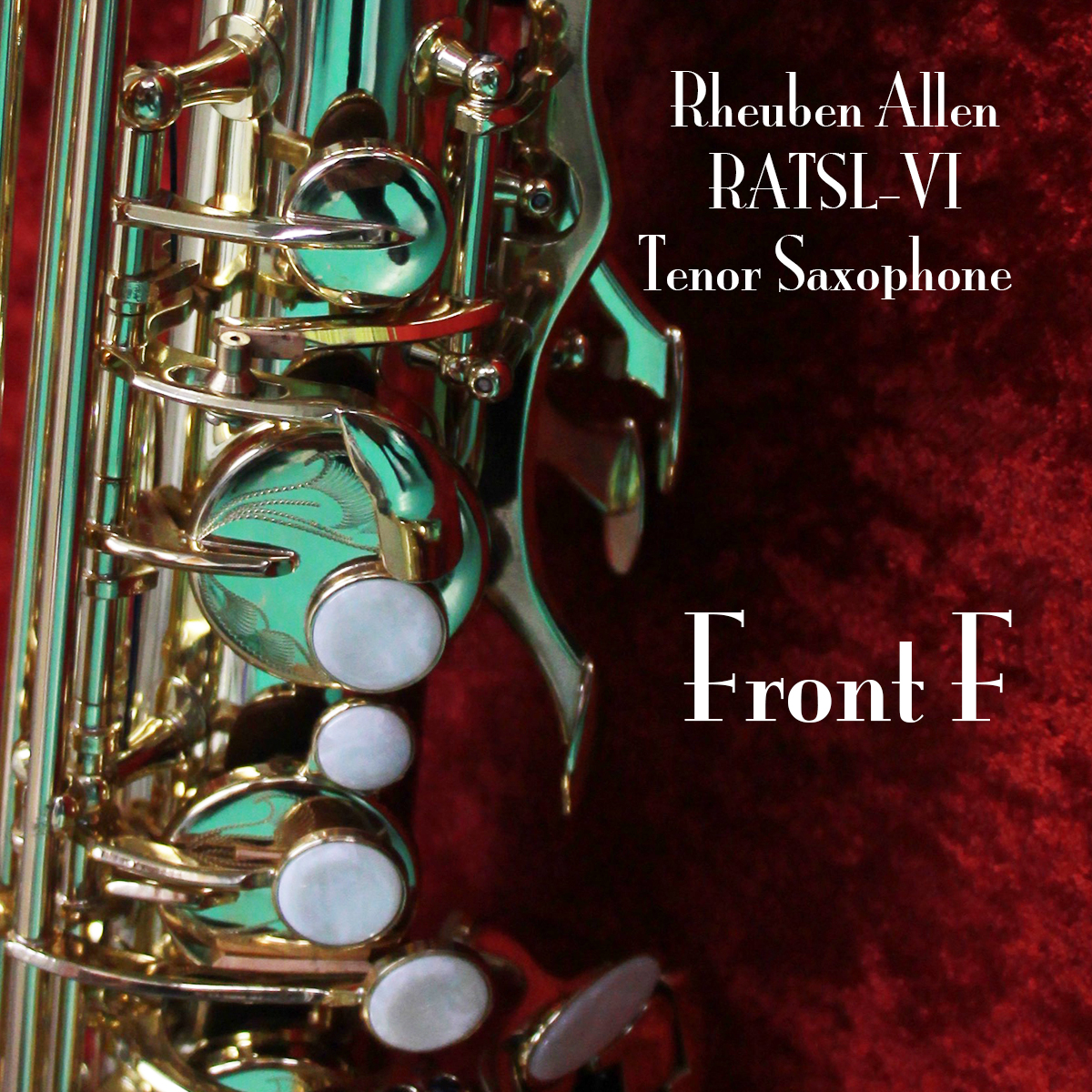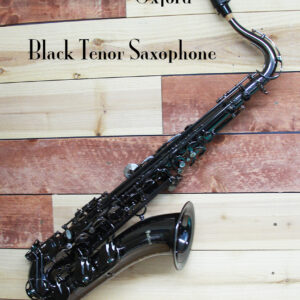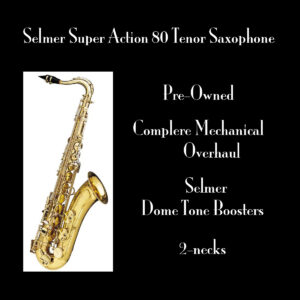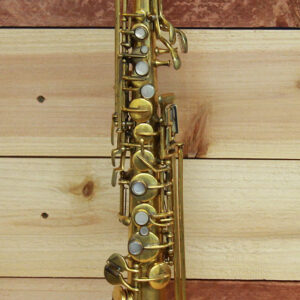RA Tenor Saxophone
$4,995.00
RA Tenor Saxophone When you want to play the best! or Single Post Tenor Sax by Rheuben Allen come with 2 necks (1) 92% Copper with my Sliding Weight neck braces (US Patrent) and (1) brass with traditional neck brace.

Description
Rheuben Allen Tenor Saxophone. When you want to play the best! or Single Post Tenor Sax by Rheuben Allen model RATSL-VI : The Rheuben Allen Tenor saxophone comes with an Otto Link Connosseur Hard Rubber Mouthoiece at no extra cost to you ($378.00)
Single Post Tenor Sax by Rheuben Allen Features:
Brand Name: Rheuben Allen®
Model No.: RATSL-VI
Product Description: RA Tenor Saxophone
Key: B-Flat
Construction: Single Post *Single Post Construction: It simple means the post are solder directly to the body of the saxophone. Uses less solder on the saxophone. *Ribbed means the post are solder to a rib and the rib is soldered to the body. This fequies more solder and it is hard to always use the same amount of solder when soldering the brace to the body..
Special Features: 1 Brass neck with a traditional neck brace and 1 92% Copper neck with the Rheuben Allen Freedom/Power neck Brace with Sliding Weight System. Saxophone Neck Brace with Sliding Weight System (US Patent #US 10,565,967 B2)….. comes with 3 different weights, Heavy, Medium and Light (Made in the USA) …. Slides up & down the neck brace with one hand….. *Rheuben Allen High & Trill F-sharp Key Designs *Rheuben Allen designed Front F key
Material: Brass Saxophone
Finish: Light Gold Lacquer
Engraving: Full Body and Key Hand Engraving
Accessories Includes:
Mouthpiece Made in the US
Mouthpiece Cap & Ligature
Saxophone Strap
Case: Shaped Wood Case w/Shoulder Strap & Back Pack Straps
Optional: Rheuben Allen Heavy Neck Screw (Made in the USA) and traditional neck screw
The tenor saxophone is a medium-sized member of the saxophone family, a group of instruments invented by Adolphe Sax in the 1840s. The alto and tenor are the two most commonly used saxophones. The tenor is pitched in the key of B♭ (while the alto is pitched in the key of E♭), and written as a transposing instrument in the treble clef, sounding an octave and a major second lower than the written pitch. Modern tenor saxophones which have a high F♯ key have a range from A♭2 to E5 (concert) and are therefore pitched one octave below the soprano saxophone. People who play the tenor saxophone are known as “tenor saxophonists”, “tenor sax players”, or “saxophonists”.
The tenor saxophone uses a larger Mouthpiece, reed and ligature than the alto and soprano saxophones. Visually, it is easily distinguished by the curve in its neck, or its crook, near the mouthpiece. The alto saxophone lacks this and its neck goes straight to the mouthpiece. The tenor saxophone is most recognized for its ability to blend well with the soprano, alto and baritone saxophones, with its “husky” yet “bright” tone.
The tenor saxophone is commonly used in classical music in (such as concert bands, chamber music, and solo repertoire) military bands, marching bands, and jazz groups). It is occasionally included in pieces written for symphony orchestra; three examples of this are Ravel’s Bolero, Prokofiev’s suite from Lieutentant Kike and Webern’s Quartet for violin, clarinet, tenor saxophone and piano. In concert bands, the tenor plays mostly a supporting role, sometimes sharing parts with the euphonium, horn and trombone. When used in jazz ensembles, the tenor plays a prominent role as a member of a section that includes the alto and baritone saxes.
Many of the most innovative and influential jazz musicians have been tenor saxophonists. These include Colman Hawkins, Lester Young, Dexter Gordon, Wardell Gray, Stan Getz, John Coltrane, Wayne Shorter. The work of younger players such as Michael Brecker and Chris Potter has been an important influence in more recent jazz.
How to read the Model No. RATSL-VI
R= Rheuben
A= Allen
T=Tenor
S=Saxophone
L= Lacquer
-= –
VI= Series
